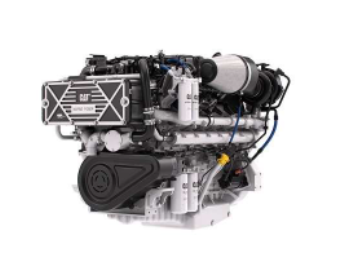The Caterpillar Marine engine, first introduced in the early 1900s, has been powering boats and ships for over a century. These engines can withstand saltwater and corrosion in harsh marine environments and are ideal for vessels of all sizes because they can deliver high-power outputs. The following is a history of the Caterpillar Marine engine and its role in maritime transportation.
Brief History
The Caterpillar Marine engine has a long and storied history, dating back to the early days of motoring. The engine was first developed in response to a challenge from the United States Navy to create a more powerful engine for its warships. The resulting design was so successful that it soon became the standard for maritime use. The Caterpillar engine was so ubiquitous that it became synonymous with maritime travel.
The Caterpillar engine was constantly evolving, and its design changed over time to meet the needs of the ships it powered. For example, during World War II, the engine got upgraded to run on lower-grade fuel to conserve resources. The engine also underwent several changes to increase its power and efficiency.
The Caterpillar 3208 diesel engine got introduced in 1975. It has a V-8 turbocharged engine with a displacement of 307 cubic inches. The engine has a bore of 4.25 inches and a stroke of 5 inches. The 3208 engine got created with the marine market in mind. It’s a tough engine designed to withstand the rigors of continuous operation in harsh environments. The engine is dependable and has a long lifespan.
Today, the Caterpillar Marine engine helps various vessels, from small pleasure craft to massive cargo ships. It remains an essential part of maritime travel, and its reputation for reliability and power is sure to keep it in use for many years to come.
Design of the 3208 Diesel Engine
The 3208 diesel engine is a 225hp, 636 cubic-inch capacity V8 design debuted in 1973 as a turbocharged version. Significant design changes started in the 1980s, including more substantial internal rotating parts, three-ring pistons, and beefed-up oil and water pumps. The cooling system got upgraded to include a more significant heat exchange. These design changes made the engine more reliable and powerful, allowing it to be useful in various applications, including marine propulsion.
Caterpillar Marine engines are now among the most popular and technologically advanced engines. Caterpillar’s commitment to innovation and quality has resulted in a robust and reliable engine, making it the ideal choice for those who expect the best from their marine engine.
Where Can You Find Applications for the 3208 Diesel Engine?
The Caterpillar diesel engine is a popular choice for various marine applications. Some of the most common include auxiliary engines on cruise ships, ferries, general cargo ships, and main engines on yachts and pleasure cruisers. The engine is also commonly used in offshore applications, tugboats, and fishing boats. Thanks to its reliable performance and durability, the Caterpillar has become one of the most trusted engines in the marine industry.
Here are other few examples of where you might find this powerful engine:
• Construction vehicles such as bulldozers, excavators, and skid steers
• Tractors
• Generators
• Pumps
• Compressors
How Much Oil Does A 3208 Cat Engine Need?
A 3208 Cat engine requires 22 quarts of oil. The best oil for this engine is Cat Diesel Engine Oil SAE 5W-40, a 100% synthetic engine oil. When used with Cat filters and S.O.SSM fluid analysis, this oil will provide extended drain capability and engine life.
The Caterpillar Marine engine has a long and illustrious history, dating back to the early days of motoring. The Caterpillar engine became so common that it became synonymous with maritime travel. The Caterpillar engine was constantly evolving, and its design changed over time to meet the needs of the ships it powered.
The 3208 Cat was one of the first models available and was widely used in various applications. The Caterpillar Marine engine is now helpful in a wide range of vessels, from small pleasure craft to massive cargo ships. However, it is still an essential part of maritime travel, and its reputation for dependability and power will ensure that it is helpful for many years to come.
































